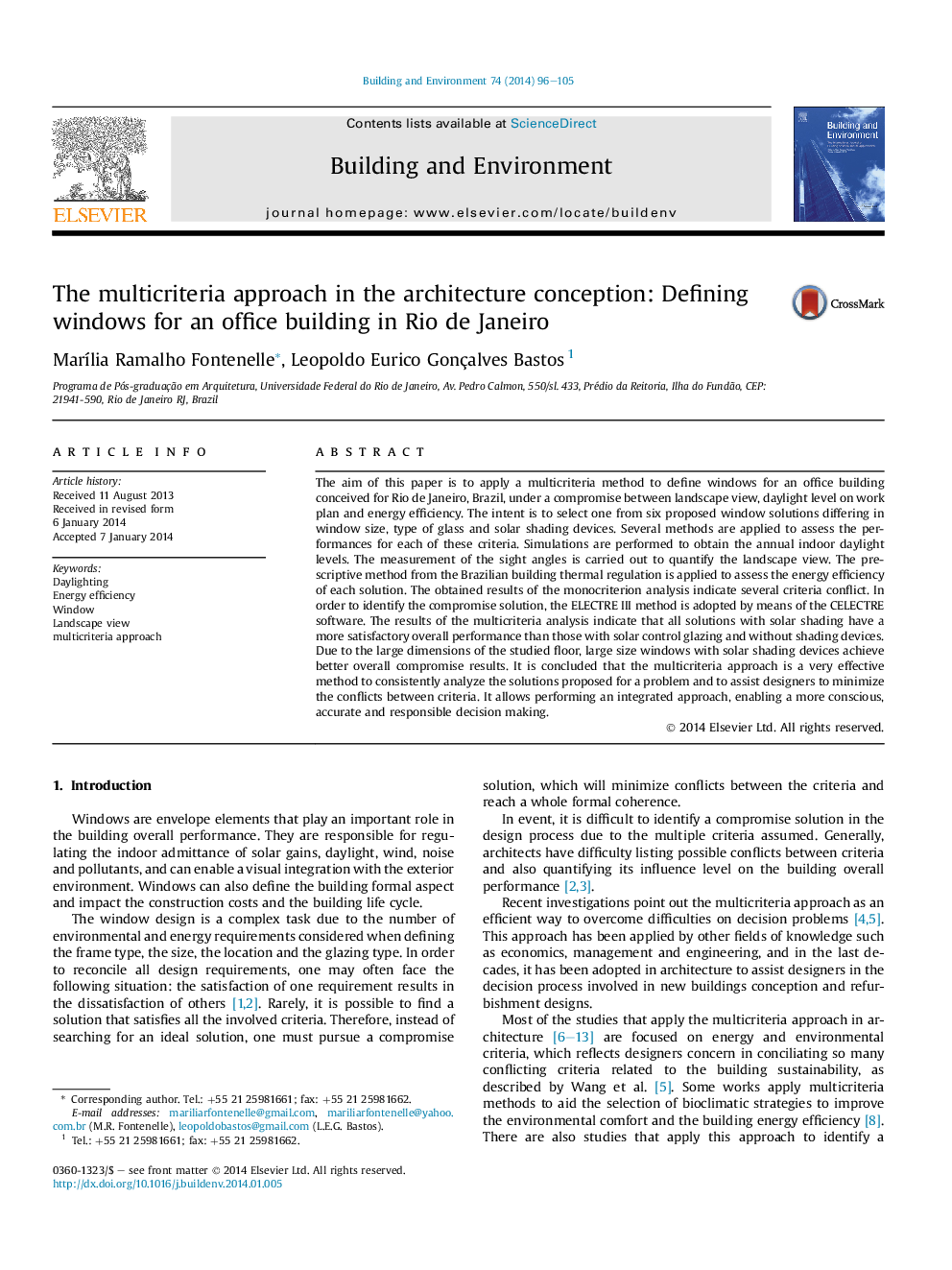| Article ID | Journal | Published Year | Pages | File Type |
|---|---|---|---|---|
| 248158 | Building and Environment | 2014 | 10 Pages |
•Shading devices provide a higher overall performance than solar control glazing.•Larger windows with shading devices provide better overall performance.•A multicriteria analysis is required to assess indoor daylight by multiple metrics.•Translating monocriterion results to single values is one of the main challenges.•Under a holistic approach the architecture conception phase can be improved.
The aim of this paper is to apply a multicriteria method to define windows for an office building conceived for Rio de Janeiro, Brazil, under a compromise between landscape view, daylight level on work plan and energy efficiency. The intent is to select one from six proposed window solutions differing in window size, type of glass and solar shading devices. Several methods are applied to assess the performances for each of these criteria. Simulations are performed to obtain the annual indoor daylight levels. The measurement of the sight angles is carried out to quantify the landscape view. The prescriptive method from the Brazilian building thermal regulation is applied to assess the energy efficiency of each solution. The obtained results of the monocriterion analysis indicate several criteria conflict. In order to identify the compromise solution, the ELECTRE III method is adopted by means of the CELECTRE software. The results of the multicriteria analysis indicate that all solutions with solar shading have a more satisfactory overall performance than those with solar control glazing and without shading devices. Due to the large dimensions of the studied floor, large size windows with solar shading devices achieve better overall compromise results. It is concluded that the multicriteria approach is a very effective method to consistently analyze the solutions proposed for a problem and to assist designers to minimize the conflicts between criteria. It allows performing an integrated approach, enabling a more conscious, accurate and responsible decision making.
